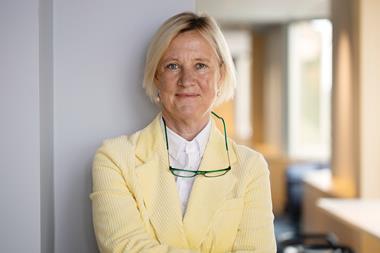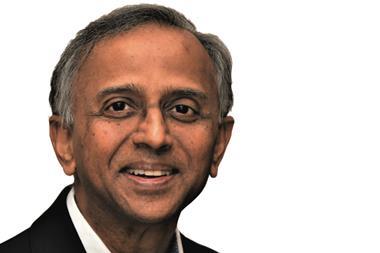Cyril Widdershoven looks at the unique problems facing the sovereign wealth funds of the Gulf Cooperation Council
The Gulf Cooperation Council (GCC) countries are facing a major financial crisis if they fail to make changes to their own structures or economies. A continued period of low prices for oil and natural gas will have a detrimental effect on the overall stability of the regional economies. After years of high oil prices, generating vast amounts of revenues being put into sovereign wealth funds (SWFs), the market is oversupplied.
Still, gross domestic growth overall in the region is positive, and inflation remains under control. Total growth of the GGC’s GDP, according to the IMF, is set to decrease to 2.7% in 2016, in comparison to 3.2% in 2015 and 3.4% in 2014.
The IMF and a report from Indosuez Wealth Management have, however, reiterated that this positive growth could soon be reversed due to oil prices and the lack of structural reforms. The fiscal landscape of the GCC has changed, again showing the dangers looming for a rentier-state region, as government budgets largely depend on a single commodity.
Oil and gas exporters have been hit very hard lately. Some changes have been put in place already, such as the removal of part of energy subsidies and the introduction of VAT but also an emerging trend inside of the GCC to attract foreign direct investments. The push to bring about reform through innovation, deregulation, divestment, taxation, subsidy cuts, reduced spending and inward investment has become very clear with regards to the SWFs’ investment strategies in the GCC.
Arab sovereign wealth funds are feeling the pressure of low oil prices, increased government budget deficits and regional economic developments. Saudi Arabia and the United Arab Emirates (UAE) are also feeling the negative impact of their increased military spending, due to operations in Yemen and Syria. Financial circumstances of the Arab Gulf countries have changed dramatically. After a very long period of high oil and gas revenues, countries such as Saudi Arabia, the UAE and Qatar have been confronted by the current low price settings. The impact of OPEC’s Saudi-led oil cartel’s strategy to fight for market share, mainly to block non-OPEC production (US, Brazil and Russia), has pushed most GCC countries into uncharted territory. The ripple effects of the oil cartel’s strategy have become visible. Instead of having to cope with the stress of finding safe but profitable investment opportunities in the West or Asia, SWFs in the Middle East are involved increasingly in dealing with the need to counter mounting government debt at home.
As Arab SWFs, such as the Abu Dhabi Investment Authority (ADIA), Saudi Arabia’s SAGIA or the Qatar Investment Authority (QIA), have been mainly the investment arm of the respective governments to increase revenues outside of their own domestic markets, the situation now has become the contrary. In recent weeks, news has emerged that sovereign funds could be retracting around $700bn (€614bn) from European stock exchanges.
The need to offload investments by sovereign funds is mainly related to the oil-price slump. Sharp sell-offs are expected in the global markets, with European stock exchanges to be hit the hardest, to a total of $700bn. Analysts have already warned that this could partly explain the fledgling development of share prices on the European exchanges. Since the start of 2016, around $240bn has been wiped out already. In addition to Norway’s oil fund, Arab sovereign funds still hold $2trn in publicly listed equities worldwide. Around one-third is held in Western European equities ($700bn), of which 25-33% is in banking stocks. It is expected that funds like ADIA, SAGIA, DIA and QIA, which hold stakes in Volkswagen, Barclays, Credit Suisse, Sainsbury’s and Glencore, could be adjusting their investment strategies.
The main issue at present they need to address is whether there is a need to liquidate non-GCC holdings to counter increased financial needs of their cash-strapped governments. Inside the GCC, the financial situation of the respective governments varies widely. Kuwait, as one of the main OPEC producers, has not yet been faced with increased government deficits. Kuwait’s SWF is also one of the best managed in the region. Still, the latter also has shown the effects of lower hydrocarbon revenues, as it is putting out less new money.
Global SWFs are holding assets of around $7trn. Of this, $3.2trn-3.4trn is held by Arab SWFs. Since the set-up of these Arab funds, largely held by the respective governments or ruling families, their main objective has been to diversify income generation by investing outside of the region. The main target regions have traditionally been Europe or the US and Canada. Due to the negative impact of lower oil and gas prices, combined with an additional share-price slump and economic slow-down in these regions, the majority of these SWFs have been forced to reassess their long-term investment strategies.
Since the beginning of 2015, a slow-down has been visible in outgoing investment volumes, mainly due to the fact Middle Eastern governments are increasing the pressure on local SWFs to invest in the local market. Qatar has already been selling some commitments to private equity (PE) funds, while others have stated that the reason the Japanese market dropped early in the year was because of selling from Saudi Arabia. Two reasons behind this change in tactics are clear – to stimulate the local economy and to reduce overall government debt. At the same time, the management of these SWFs has been urged to increase returns and manage their reserves more efficiently. The first signs of this refocus on local markets has become visible already. SWFs, such as ADIA, SAGIA and SAMA, have become more active in local PE, real estate and infrastructure opportunities.
In addition to the SWFs’ retraction of funds, GCC pension funds also have become more locally focused. The stress on these funds, holding $400bn-500bn, has become even more harsh. Due to a combination of sub-optimal asset allocations with unproductive high cash reserves, limited exposure to high-return alternative investments, the fragmentation of mandates and very low internal skill levels, the yields on investments have been remarkably low. GCC governments are exploring other options, as, due to shifts in demographics and high benefit levels, most of these funds are expected to face funding gaps very soon.
The main focus of GCC-based SWFs at present seems to be infrastructure projects in the Arab region. Due to the need to counter a possible $1trn shortage in funding of infrastructure financing in the region, Arab governments have urged the funds to target these projects, in combination with private investors and private sector companies. Public/private partnerships (PPPs) are part of the deal in the coming years. PPPs and alternative sources of funding, which might offer international and regional investors the opportunity to participate in these projects, are set to be a main instrument. Funds like Kuwait’s Global Investment House, Qatar Investment Authority, SAGIA and ADIA,are expected to be major players. The possible privatisation of parts of national companies, such as Saudi Aramco, could be also a potential target.














No comments yet